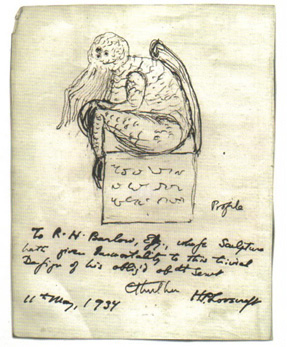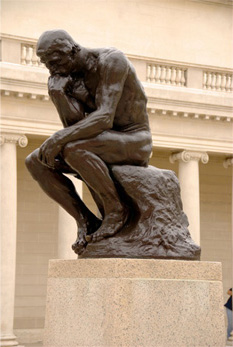Paper Curating
Nathan Lee
“A couple of years ago, Mathieu Copeland and I were discussing the possibility of an exhibition curated by a table. The Parliament of Things by Bruno Latour was a reference. Yet we denounced the idea because a table is too deeply invested as a philosophical trope of objectivity. Nevertheless a table as a thing in itself, rather than a trope, could probably still surprise us with something, not necessarily with an art project, though—the creativity of a table does not have to be locked within the artistic realm. When Francesco Manacorda added that he would like to see an exhibition curated by two parrots, six chocolate cakes, a bowl of seawater, two cans of warm Guinness, a potted geranium, and Maria Lind, I thought this would be my favorite Documenta ever.”
– Raimundas Malašauskas, “Artworks Curate Too”
1. What is Paper Curating?
A production of the curatorial imaginary, released from the institutional pragmatics through which, and against which, curatorial practice articulates its platforms.
Paper curating arises, in part, as a means to critique these disciplinary parameters even as the elaboration of this critique serves to formulate the boundaries of paper curating itself.
Like paper architecture before it, paper curating strikes forth from its model to forge a parallel discipline. And thus it is to be distinguished from the failed, aborted, rejected: not the unrealized but the unrealizable.
Proceeding at every moment with no intention of being “actually” made, paper curating is nevertheless a production of the curatorial real.
At the conference on social practice moderated by Cthulhu, it was argued, persuasively, that there is no such thing as immateriality. The art object has never been dematerialized.


(Proposal means “the action or act of putting before the mind.”)
Paper curating is rarely produced on paper. Its native platforms are laptops and smartphones, word-processing applications and spreadsheet software, e-mail clients and social networking platforms, Photoshop, PowerPoint, SketchUp, tumblr.
2. A Brief History of Paper Curating
Paper curating does not exist.
1970: “At the Tolstoy Museum we sat and wept. Paper streamers came out of our eyes. Our gaze drifted toward the pictures. They were placed too high on the wall. We suggested to the director that they be lowered six inches at least. He looked unhappy but said he would see to it. The holdings of the Tolstoy Museum consist principally of some thirty thousand pictures of Count Leo Tolstoy.”[1]
2003: AA Bronson proposes Documenta Sex, an exhibition devoted entirely to “the subject of sex in its myriad of manifestations and interpretations.”[2] Bronson drafts a set of thematic nodes arrayed throughout the main venues in Kassel: “Art industry as sex industry,” “The legitimization of the pornographic image,” “Replacing the dick with the cunt.” Moving beyond the galleries, Bronson absorbs the existing social infrastructure of Kassel into his project, claiming the city’s sex shops, cruising areas, massage parlors, etc., as official Documenta sites. Here, the paper curatorial move par excellence is an additional annexing of such zones wherever artists are found, a totalizing maneuverer that inverts the curatorial co-option of site. It is no longer a question of bringing the world to Documenta, but rather of turning the world into Documenta.
The catalogue for Documenta Sex will make you horny. In their post-show press release summarizing this year’s attendance (“unprecedented!”), the PR department includes statistics on “the number of involuntary hard-ons and wet cunts, the volume of precum, and the proportion of scrambled brains produced by exposure to the publication.”
2009: “Can an exhibition be a life-sized paper model of itself?”[3] Paper Exhibition, curated by Raimundas Malašauskas at Artists Space in New York, evolved from a seminar devoted to questions about our attraction to “the missing, the lost, and the impossible to know.” Focusing on artworks that “position themselves as fragments of larger, non-documented narratives of the lost or vanished,” the project underlines its own ellipses, its slippage from itself, as a central concern: “In translating the seminar to an exhibition, aspects of the conceptual framework of the show have been lost as well. Some ideas and references have evaporated in this transition, while others are still disappearing.”
Despite such conceptual (re)framings, the thematic/essayistic mode of curatorial practice has largely remained intact here.[4] Paper Exhibition is curating that dreams of becoming paper curating.
Paper Exhibition did, however, inaugurate the sister discipline of cryptomuseology, described by the artists Chris Fitzpatrick and the Post Brothers as “the alleged science, practice, or study of unverifiable and unsubstantiated cultural and museological practices.”[5] Examples cited include “galleries representing non-existent artists,” “the circulation of press releases announcing exhibitions that will never open,” “shipping companies secretly hired to deliver works as stolen,” and “demonstrations that telepathically implant immaterial objects onto the minds of audience members.”
Cryptomuseology is predicated on a principle of doubt, skepticism, or the unknowable. Paper curating, by contrast, aligns itself with a positive mode of production: it assumes that “the notion of the virtual stops being vague and indeterminate. In itself, it needs to have the highest degree of precision.”[6]
2011: The International Academy of Art—Palestine and Van Abbemuseum partner to display Picasso’s Buste de Femme in Ramallah. The production of the exhibition, two years in the making, receives as much focus as the painting itself: a shipping crate marked “From Eindhoven to Palestine” is prominently featured.
Picasso in Palestine is a paper curatorial project that actually happened.
Nathan Lee is the Curatorial and Program Associate at CCS Bard.
- Donald Barthelme, “At the Tolstoy Museum,” City Life (New York: Farrar, Straus & Giroux, 1970), 43. return to text
- AA Bronson, “Documenta Sex,” March 2003, http://www.aabronson.com/art/documenta/documenta_text.htm. return to text
- “Paper Exhibition,” Artists Space, January 16, 2009, http://artistsspace.org/exhibitions/paper-exhibition/. return to text
- Or so it would seem. I did not see Paper Exhibition during its run at Artists Space. My description of, and remarks on, the project derive from materials sourced on the Internet. There is a sense in which all curatorial projects not experienced firsthand become paper curating. return to text
- Chris Fitzpatrick and Post Brothers, Paper Exhibition: Selected Writings of Raimundas Malašauskas (Berlin: Sternberg Press, 2012), 107. return to text
- Gilles Deleuze, Bergsonism (New York: Zone, 1991), 94. return to text
-- Download Paper Curating as PDF --